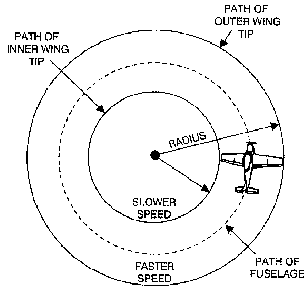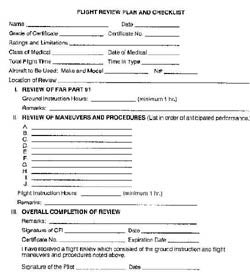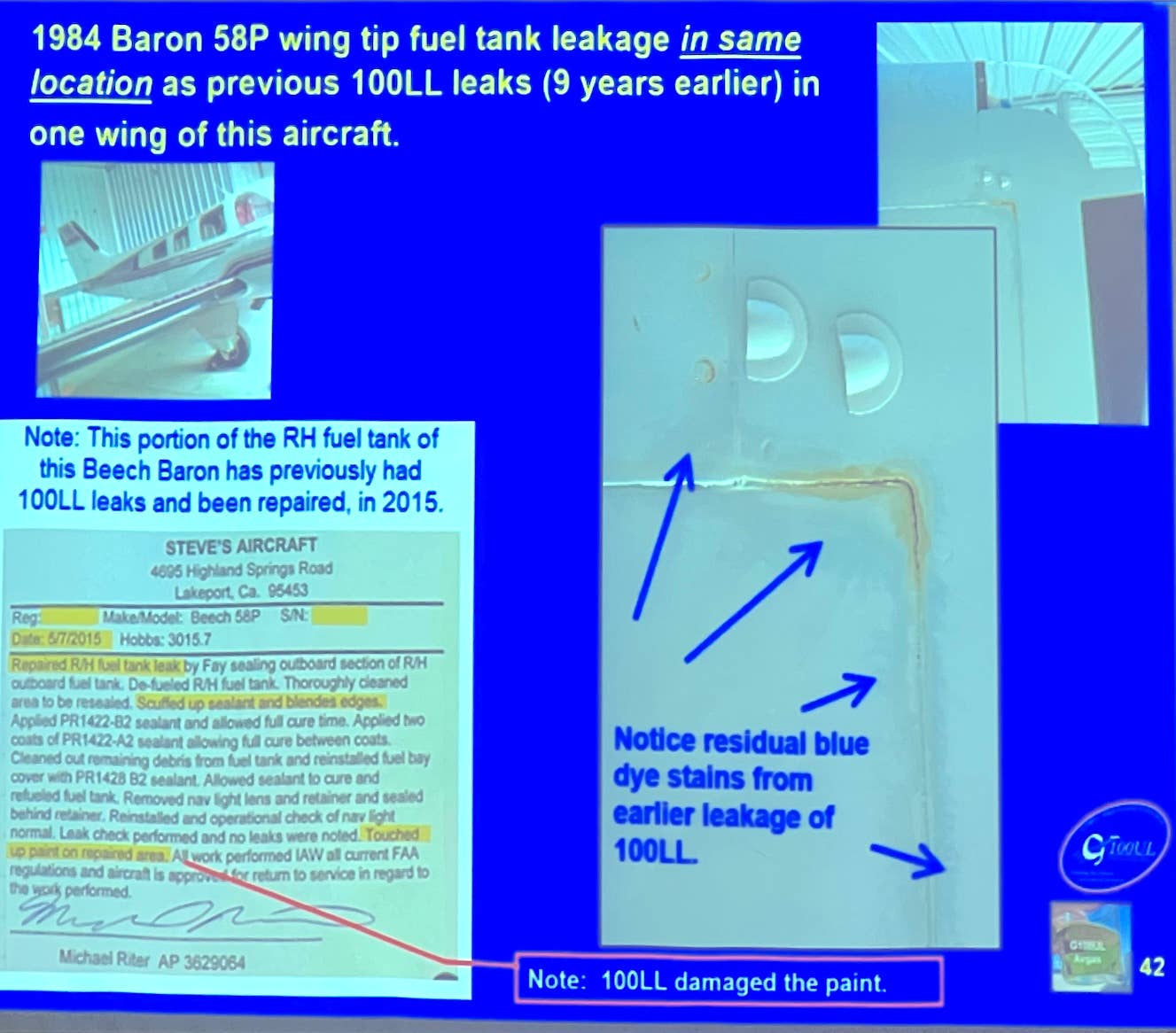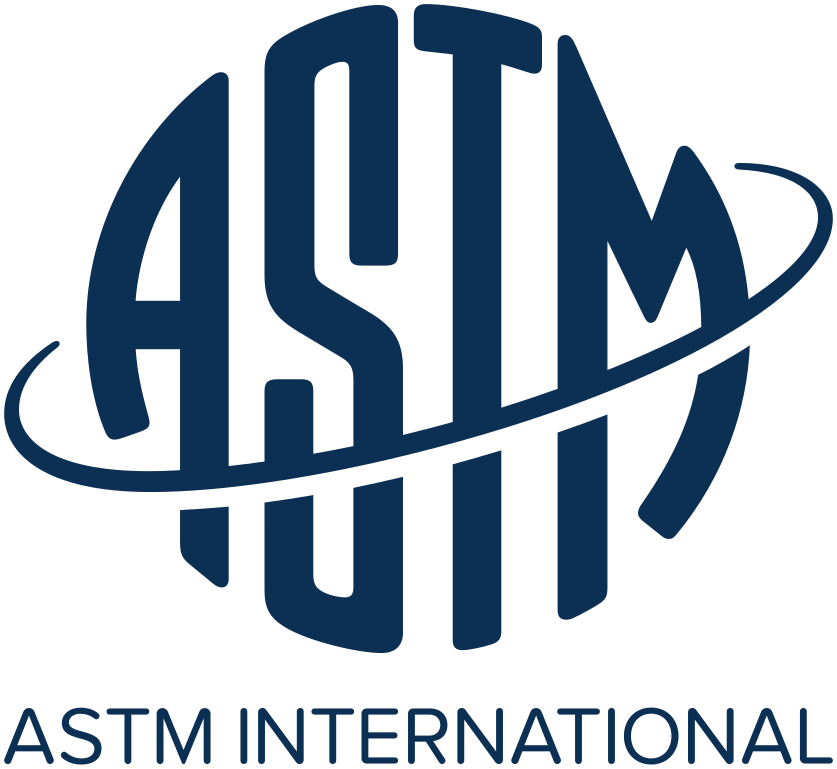Gleim FIRC – Easy Does It
Lately, things have become a lot easier for flight instructors in need of a refresher course. If, like Glenn Daly, you dislike freeways and crowds, and you’re, shall we say, “thrifty,” you might consider doing your next FIRC online. Read on for Glenn’s first experience with Gleim’s offering.

Lately, things have become a lot easier for flight instructors in need of a refresher course. If, like Glenn Daly, you dislike freeways and crowds, and you're, shall we say, "thrifty," you might consider doing your next FIRC online. Read on for Glenn's first experience with Gleim's offering.
 | |
I'm sometimes lazy and always dislike a crowd -- which is why I opted to take my first FIRC online. Lazy because I don't like the crowded San Diego freeways and hate giving up my weekends flying biplanes or instructing ... and making money. And, ever since my bartending days waaaay long ago, crowds have always made me nervous -- and a crowd of flight instructors cranky about making no money while they're taking a weekend FIRC was not a crowd I needed. Hence, I plunked my hard-earned $99.95 on the electronic barrelhead at Dr. Irv Gleim's website.
Why Gleim and not American Flyers, AOPA Air Safety/Jeppesen or, blush, my full-time employer, King Schools? Well, people I know tell me that Dr. Gleim is a heckuva guy, and, besides, John & Martha haven't gotten their geeks around to developing an online FIRC yet. Okay, boss?
What did I find at Gleim? A reasonably straightforward and easily navigable site, which led me promptly to the proper page. Then followed a reasonably long-winded description of the course, the way it's administered and graded, and only a half-dozen pitches for their "$25 -- get your certificate from us" come-on -- which has major lazy appeal, fershure. But I'm cheap, too, and the FSDO is only a short hobble up Aero Drive from my place of employ -- and the FAA folk are always so friendly.
Gleim has a clever pitch. Take the first lesson, online, for free. Did I mention that I'm cheap? Hence, this was a no-brainer. There are plenty of instructions -- straightforward instructions that even someone who never "reads the @#$%! manual" ... namely, me ... can understand. The course is organized so that you are first led to a lesson outline of, on average, 13 pages. After printing or downloading the outline, reading (or not) the material, and signaling that you're ready, you proceed to 30 true/false questions specific to the material you just did (or didn't) read. After that, if you answer 70% of those questions correctly, you are allowed to attempt the actual test for that lesson, which is comprised of 10 multiple guess questions, again based on the material contained in the outline.
Thus, after reading the aforementioned instructions, creating a user name (skyho) and a password, I was delivered to the first lesson, "Teaching Aerodynamics."
Let the Games Begin
 | |
The Dreaded V-GDiagram | |
Now, I gotta tell you that, of all my weaknesses, aerodynamics is my weakest. V-G diagram? Can you say, "ARGH"? Stability, controllability, and maneuverability? Can you say, "SNORE"? I attacked Lesson One with the hope that, perhaps, I might see "Aerodynamics" in a new light -- one that didn't look like the landing lights of a 747 aimed directly at my person. But, to test my knowledge, I attempted Lesson One without reading the outline, just plunging into the 30 true/false questions -- perhaps, not my best idea. The whole process took me 17 minutes and I scored a 79. Ego goeth before a fall.
The questions on the actual graded test aren't derived from the FAA question bank, and some of them seemed weirdly worded. For example, here's #7: "In small airplanes, normal recovery from spins may become difficult if the: A) CG is too far rearward, and rotation is around the longitudinal axis; B) CG is too far rearward, and rotation is around the CG; C) spin is entered before the stall is fully developed." Of course, B is the correct answer, but it was worded so that I wasn't completely certain on the first pass.
Here's another: "Stall speed is affected by: A) weight, load factor and power; B) load factor, angle of attack and power; C) angle of attack, weight and air density." I don't have an argument, per se, with the question. It's just that I guess I'm used to the FAA standards and had a problem with Gleim's variations.
Tricky, tricky ...
Gleim's Online FIRC: A Satisfied CustomerI've been a CFI for about 30 years, so I've had to renew my certificate about 15 times. For most of that time, my only option was to attend an FAA-approved renewal course. Initially, those courses were three full days and 24 classroom hours; subsequently, the FAA reduced the requirement to 16 hours and the courses could be completed over a long two-day weekend ... |
A few questions are purposely tricky -- containing information that's mostly true, with one innocuous-looking maguffin thrown in. It tends to make the test taker spit back the outline info, verbatim. Here's one of those picker-of-nit-type questions from Lesson Two: "The Aeronautical Chart Bulletin section of the Airport/Facility Directory (A/FD) contains a listing of major changes (e.g., new frequencies, obstructions, etc.) to each sectional, VFR Terminal Area, IFR enroute, and helicopter route chart within each chart cycle." True or false. Well, it's false, although had the words "helicopter route chart" not been included, it would have been true. All right, already ... I got it wrong and I'm sore. I find it just a tad tedious and a pinch petty to have to inspect every word of a question, or else get the question wrong. Understanding concepts is more important than matching study material and test questions word for word.
Okay, I'm done whining.
Once you've taken the free first lesson and decide to pay the money, you'll find 15 more lessons waiting for you. Gleim says that you should be able to get through each lesson in 50 minutes -- a fast reader should take half that time. As an example, Lesson Two, "Flight Information Publications," took 10 minutes to complete and I scored an 86 on the 30 true/false questions. I spent less than five minutes on the actual 10-question test and, best of all, got a 100. (The thought of Sister Mary Euthanasia's knuckle-busting ruler has always made me a good test-taker.) It took 30 minutes of reading to finish Lesson Three, "Human Factors," I answered all 30 true/false questions correctly, but I missed one of the 10 on the test. And so it went.
 | |
Can you say, "Overbanking tendency"? | |
Lesson Nine, "Teaching Flight Maneuvers and Procedures," took 45 of my minutes to read, six minutes to complete the 30 true/false questions, and another five minutes to complete the test. One of the questions got to me, though: "What is the correct traffic pattern departure procedure to use at a non-controlled airport? A) Depart in any direction consistent with safety, after crossing the airport boundary. B) Make all turns to the left. C) Comply with any FAA traffic Pattern established for the airport." I'm sure if I had dug out my AIM, I'd find answer C to be correct ... but I didn't, and got it wrong.
Was it worth the effort? Of course it was. When you review material that you learned years ago, you can't help but benefit. For instance, when was the last time you thought about your professional duties and obligations? Gleim's Lesson Seven, "Instructor Professional Responsibilities," reminds us of some basic tenets that we often forget: sincerity; acceptance of the student; personal appearance and habits; demeanor; safety practices and accident prevention; and, most important to my mind, self improvement. And ... even though the fundamentals of instructing are learned at the lowest (you remember, the "rote") level of learning, some of those principles ring true in all we do -- and Gleim covers them in Lesson Eight.
As far as I'm concerned, you can never learn too much about the teaching process and understanding how people learn. To that end, I think Gleim takes a positive approach -- there are six lessons that deal with teaching (Aerodynamics; Maneuvers and Procedures; Flight Safety) or training (Transition; Recurrency; GPS). Specifically, I've rarely been exposed to discussions on transition and recurrency training (Lessons 11 and 12), and I believe that any instructor would benefit from them.
The Dreaded Flight Review
Gleim also includes suggestions for completing one of my least favorite aspects of instructing: the flight review. Along with a solid discussion of practical applications, Gleim offers a form that might be used for flight reviews, as well as an outline of Part 91 topics that you might include in your next BFR. Gleim concludes this lesson with a discussion of my favorite form of recurrency training, the Pilot Proficiency Program -- better know as WINGS. If all of us prodded all of our students into the WINGS Program, there'd be fewer aircraft accidents in the future.
Working nights and parts of one weekend, I successfully completed the course in one week and had my "Affidavit and Graduation Certificate" in my hands, immediately thereafter. Of course, once I finished, I was given yet another opportunity to spend $25 more for Gleim to process my renewal. You probably already know what I did.
In summary, then, I think that if you approach the Gleim FIRC in the spirit of learning, you will find it very informative. Online FIRCs, however, appear to be a great way for slackers to get through their FIRCs without much effort, since it allows people to do the absolute minimum and still succeed. What might I change? Well, for one, I'd like the FIRC to be more of an intellectual challenge, rather than a test of rote memorization. In addition, I would really liked to have seen more illustrations ... because, let me tell 'ya, after reading 206 pages of technical text broken up with only a few line drawings, these old eyes were straining. Heck, after reviewing the material in preparation for this critique, I welcomed the sight of even the dreaded V-G diagram. I realize that adding more graphics might add more time to the download -- but Dr. Gleim and crew might well consider it for their next version.
P.S.
As a postscript, I've spoken with a colleague who took American Flyer's online FIRC, and he seemed reasonably pleased with their product. What he liked the best, however, had to do with cheap appeal. (Yes, Virginia, most flight instructors are cheap.) American Flyers allows you to take unlimited FIRCs after you pay a one-time fee. That means, $100 with American Flyers will allow you to renew your flight instructor's certificate with them every two years, for as long as you, and American Flyers, are in business.
AOPA's Air Safety Foundation, in conjunction with Jeppesen, offers their version of an online FIRC for $149.99 -- and after you register with them, they give you the option of taking your first lesson online for free, just like Gleim. While I don't have any acquaintances who have taken their course, I'm sure it meets the high standards of their other fine products.
What's it all mean? If you're afraid of crowds, hate the freeways, and snore loudly when you hear the words "aeronautical decision making," you might want to check out an online FIRC. Which brand? That's up to you ... although when my number comes up again, I'll probably stick with Dr. Gleim. Unless, of course, someone wants to pay me to write about someone else's product. Did I mention that I'm cheap?
About the author...
Besides getting paid to make John King laugh (he laughs easily so it's a great gig), Glenn Daly is a part-time flight instructor, flies air tours in open cockpit biplanes, and occasionally contributes to this and other publications. He's been a pilot since 1976, but didn't start flying seriously until 1997. Since then, he's flown over 500 hours a year, providing instruction in single-engine, high-performance, complex, and tailwheel airplanes. When he grows up, he's going to finish the Great American Flying Novel and run off with the love of his life to a little grass hut on a short grass strip on the north shore of the island of Molokai. With luck, he'll be able to afford an airplane.
Gleim's Online FIRC: A Satisfied Customer(continued from above) ... Over the years, I signed up for several of the FIRCs put on by the AOPA Air Safety Foundation, one from American Flyers, and a couple of others. I found the courses about as enjoyable as a trip to the dentist. And because I live in a rural area, they all involved traveling hundreds of miles to a city where the FIRC was being held (Oakland, Long Beach, Tucson), and paying for several days worth of hotel and restaurant bills, in addition to the course tuition. In the mid-90s, Jeppesen persuaded the FAA to approve a home-study FIRC that employed video and audio cassettes plus a large workbook. The idea of being able to renew at home really excited me, so I signed up for the Jepp course. Big mistake! It took me two months to struggle through half the Jeppesen FIRC syllabus, and by then I was so frustrated that I abandoned the course and signed up for an AOPA weekend FIRC in San Diego. Then in 1999, Gleim introduced the first FAA-approved online FIRC delivered via the Internet. It sounded to me like a great idea, so I signed up as an early adopter. Although the initial FIRC seemed a bit crude, the concept proved to be terrific. I could take the course at my own pace -- and since I always have my notebook computer with me when I travel, I could work on the FIRC while on-the-road. (I even did one or two sections while I was in the Cayman Islands in June 1999 as part of the Cayman Caravan.) By the time I completed the course in July 1999, it was clear to me that this was a far more convenient, economical, and enjoyable way to go than the conventional classroom FIRCs, and a vast improvement over the videotape FIRC. Two years later, in 2001, I renewed once again using the Gleim online FIRC, and my experience was even better. The course materials were better, and by then Gleim was able to handle all the FAA paperwork, eliminating the requirement for me to take my graduation certificate to an FAA FSDO in order to get my renewal and temporary CFI certificate. When my CFI next comes up for renewal in 2003, there's little doubt in my mind that I'll renew via the Gleim online course once again. Put me down as a satisfied customer. -- Mike Busch |







